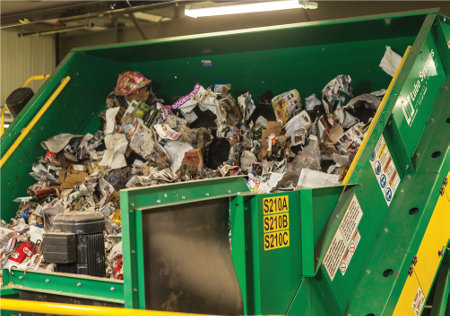 by Mark Neitzey, Director of Sales, Van Dyk Recycling Solutions
by Mark Neitzey, Director of Sales, Van Dyk Recycling Solutions1. I hate screens, so why would a new screening package help me?
The new non-wrapping style fiber screens aren’t the ONP screens of 10 years ago. They are the best piece of equipment out there right now for primary paper/container separation in single-stream MRFs. They handle high throughputs of fiber/containers much better than a ballistic separator or an optical sorter as the primary separation device and are just as low-maintenance.
2. Can I change out my screens to be all ballistic/elliptical separators?
Operators see the benefits of elliptical separators (no wrapping, no stars to change, less maintenance), and they want to apply that to every screen in their facility. However, ballistics have severe throughput limitations when the material mix is a high percentage of 2D (film and paper) and a low percentage of 3D (rigid containers). They work fantastically with a high percentage of 3D and a low percentage of 2D. We advise customers to use a large capacity nonwrapping fiber screen for primary fiber/container separation.
3. Can I just add an optical sorter or a robot to solve my problems?

There is always more to a retrofit than just dropping in a piece of technology. Robots should not be oversold as a major solution to this MRF crisis. Robots might make sense on plastic container QC, but they can’t help as a primary separation device or on fiber quality control. An optical sorter can sort 10 times more picks than a robot. Regardless, major focus should be placed on how the new piece of technology is fed. It is ALL about the feed. Single-layer feeding of material is still necessary for sensor-based technology to work properly.
4. Small browns/OCC are problems for us in our paper. How can we recover this?
Manual sorting is not effective, and your QC line is probably not long enough to provide adequate space for the necessary staff. Optical sorting can recover OCC/small browns and even prohibitives (containers and trash), but it takes the proper design, retrofit layout and feeding to be successful. We have been installing optical sorters to recover browns from paper for the last 10 years.
5. How can I be sure I’m investing in the right equipment?
Take your time making retrofit decisions. Talk to other operators who are processing similar material, visit other facilities and check references. Our company has just finished construction on a brand new material testing facility in our Norwalk, Connecticut, headquarters. It includes four different optical sorters, an elliptical separator and fines screens. You can bring a sample of your material to test different sorting scenarios; see what it takes to get the results you want and feel confident in making an equipment purchase.
